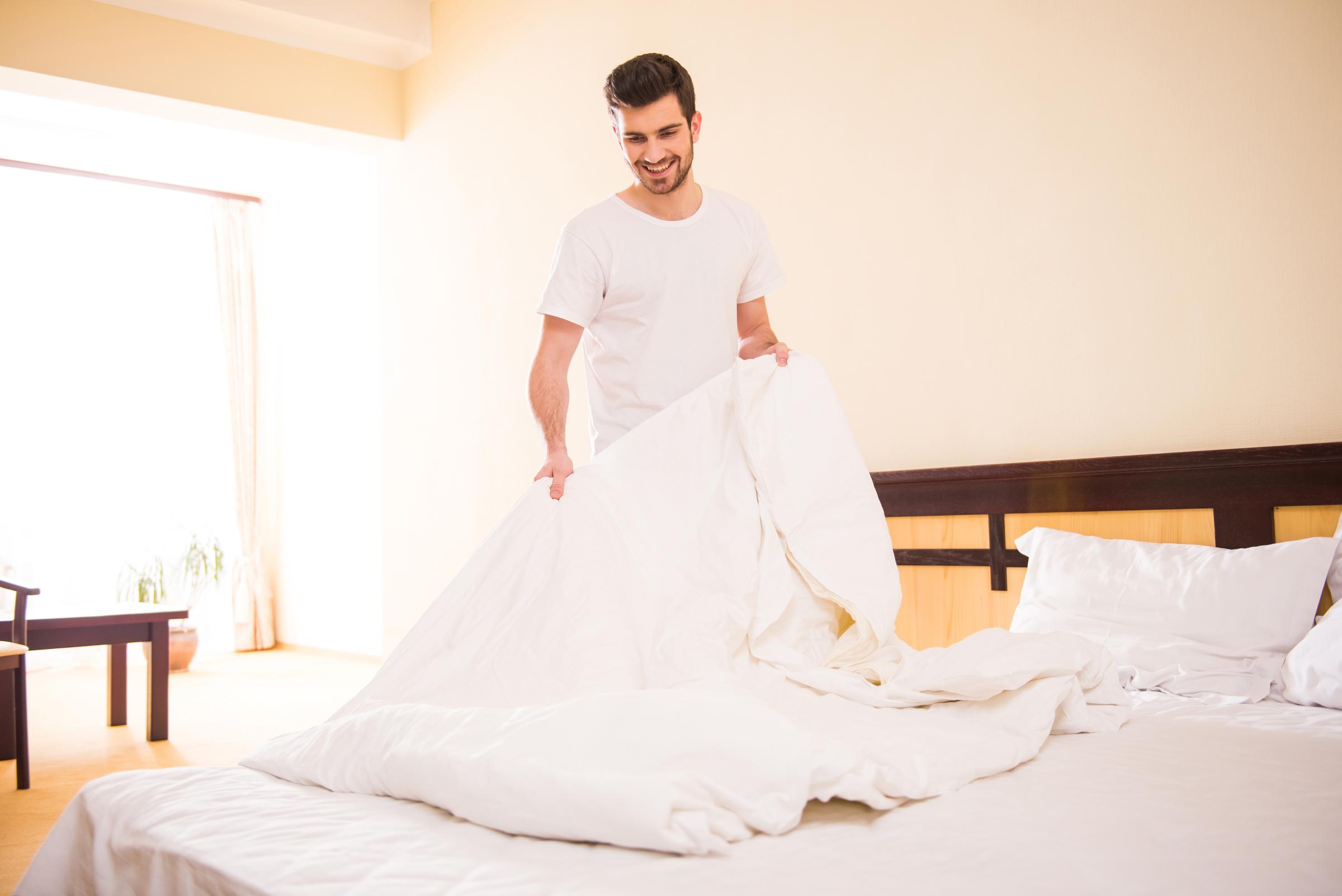Nowadays with hygiene very a great deal at the pinnacle of everyone’s minds, many of us are looking for methods to make our Beds cleaner and healthier. Considering the range of hours we spend in our bedrooms dozing, slumbering, looking Netflix or surfing social media, they’re a terrific area to start considering techniques to tackle areas wherein dirt and germs may also collect. It’s amazing how some tweaks for your bed (and the things in it) and adopting new behavior can maximize your potential to fight off contamination and stay wholesome.
Where Germs Hideout?
While you might wash your bedding regularly, there are other potential trouble spots worth addressing – not all of them obvious. Starting from the ground up, think about your floors and carpeting. Some estimates say that the average carpet has nearly 200,000 bacteria per square inch – more than a toilet seat. Ick. Dust and dirt tend to become embedded in the fibers so a weekly vacuum is necessary.
If you have allergies, rugs aren’t the best option for you. Stick to hardwood and other types of flooring. As well-trodden surfaces, they will also need a thorough mopping once a week.
When is the last time you wiped the light switch and doorknobs in your bedroom? These are also potential areas for germs because of frequent hand touching. And we’ve heard the message from the Centers For Disease Control about the importance of hand washing to stop the spread of infections. It estimates that 80% of the germs we come in contact with are spread because of inadequate handwashing. Give those switches and doorknobs a thorough cleaning and finish with an anti-bacterial wipe. If wipes are scarce, make your own disinfectant solution with one cup of bleach for every five gallons of water. Wear rubber gloves when you pour it into a spray bottle. A big cautionary note here: Don’t add anything else to the bleach solution, including ammonia, anything acidic (like vinegar) or alcohol. The resulting chemical reaction can be very serious and dangerous to your health.
How to wash your hands Another sneaky spot that might have slipped from your germ radar include curtains. All those folds and pleats make perfect dust collectors. A couple of times a year, throw them in the wash for a rinse. Hang to dry. Lamps, too, fall into this category. Dust settles onto the shades easily and often without us noticing. Clean them with a damp cloth or use a lint roller.

While you might suppose which you’ve were given the key components of your bed room covered – pillows, mattress and mattress linens – now’s an awesome time to check fundamental family hygiene protocols and to replace them.
How to clean pillow
The stats on dirty pillow instances are sufficient to make you run directly for your washing system. According to a Business Insider tale, an average pillow has as many as sixteen varieties of fungus and fungus spores – a few potentially risky for your fitness. Add micro organism to the combination – again greater than your common rest room seat. Then allow’s encompass oil, sweat and perhaps a few make-up residue. But earlier than we get over excited, it’s not all doom and gloom – the answers are smooth. Use pillow covers beneath your pillowcases and wash each frequently. Throw out vintage pillows that are falling quick inside the aid branch. For pillows that still have existence in them, wash them (if they’re the washer-friendly kind) in hot water once a week or positioned them in the dryer for a excessive warmth cycle if they’re no longer washer-friendly.

How clean mattress
You spent true money to find the perfect bed to get a notable night time of sleep, however how are you treating it? First off, it could be time to retire your mattress. With a mean existence span of seven to 8 years, your bed isn’t turning in most reliable frame assist if it’s older. What’s greater, it’s probable harboring a build-up of a whole lot of bacteria and lifeless-pores and skin-mobile-consuming dust mites. No one desires to sleep on a bed that would positioned a petri dish to disgrace. In with the new and out with the vintage.
You can display a more recent bed plenty of love by overlaying it with a mattress protector or cover. You may additionally had been averting them due to the fact older fabric kinds crinkled while you rolled over. The most modern sorts will permit your bed breathe and hold it free from the yucky stuff. What’s greater, a bed cowl protects your bed from spills and stains, in an effort to void your warranty. If you may’t be satisfied that a mattress cowl is the proper answer, turn to your vacuum for assist. When you convert your sheets, use a vacuum attachment to hold the mattress particles-unfastened.

Clean your sheets
An often-mentioned stat is that you shed about 15 million pores and skin cells every night time. That’s sweet information to dust mites, horrific news for all people with dirt hypersensitive reactions. Beds can be cesspools of bacteria with a few nasty types, like bacilli (the kind of micro organism that reasons meals poisoning) lurking for your sheets. Experts say washing or changing mattress sheets weekly helps make certain a wholesome sleep surroundings. You might also need to undertake a more common habitual in case you’re liable to sweating or hit the hay after hitting the fitness center without showering first.
If you’re no longer a weekly sheet changer, you’re now not by myself. In one examine of 1,000 Americans, maximum placed on sparkling bed linens simply as soon as each 24.Four days. Married couples had been ahead of the game, swapping sheets out every 19.Nine days. Single oldsters did now not shine within the study. On average, they changed sheets each 37 days.
While cleaning the sheets, pillow cases, mild switches and such in our bedrooms would possibly appear to be a lot of paintings – and it’s miles – the practice will provide you with a cleanser, healthier sleep surroundings. And the lowest line is that we are able to all breathe less complicated and get a splendid night time of sleep in a tidy, germ-unfastened bed.






